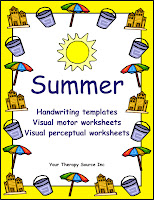"The gamma rhythm is known to be controlled by attention and learning, but we find it is also governed by how fast you are running," said Mehta, an associate professor of physics and astronomy, neurology, and neurobiology and the senior author of the study. "This research provides an interesting link between the world of learning and the world of speed."
Just a thought but considering that the limbic system (which the hippocampus is a part of) is involved in the pathophsiology of ADHD what does this recent mice study suggest? Could it be possible that running could decrease ADHD symptoms? How about autism where the hippocampus is also involved?
References:
DeRose, Kim. Brain rhythm associated with learning also linked to running speed, UCLA study shows. Retreived from the web on 6/29/11 at http://newsroom.ucla.edu/portal/ucla/ucla-physicists-discover-surprising-208271.aspx
Plessen KJ, Bansal R, Zhu H, Whiteman R, Amat J, Quackenbush GA, Martin L, Durkin K, Blair C, Royal J, Hugdahl K, Peterson BS. Hippocampus and amygdala morphology in attention-deficit/hyperactivity disorder. Arch Gen Psychiatry. 2006 Jul;63(7):795-807.








